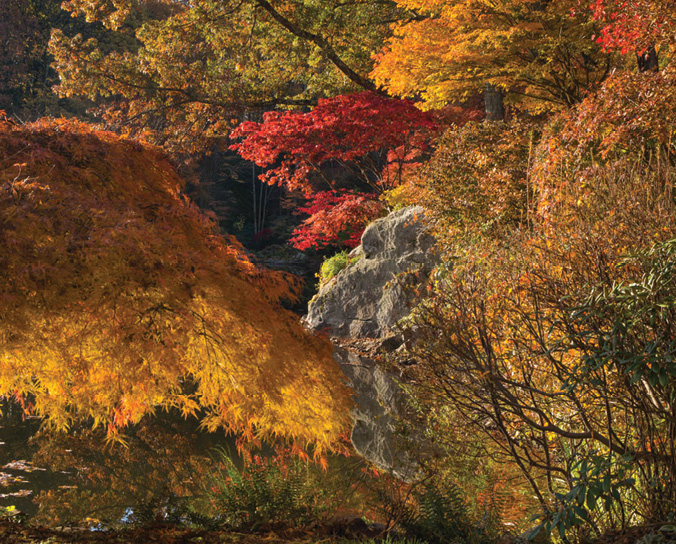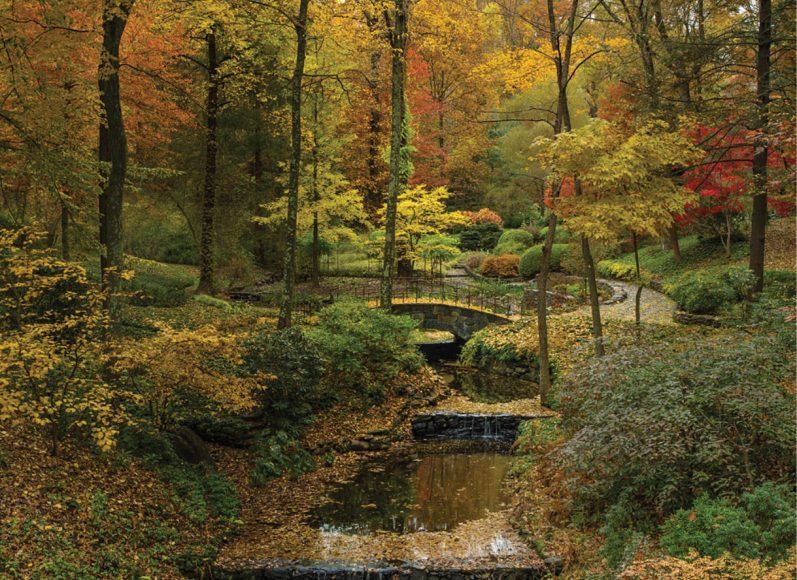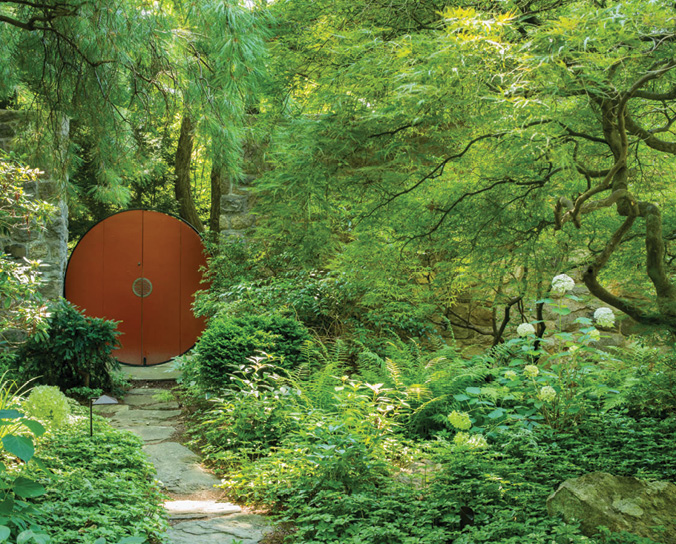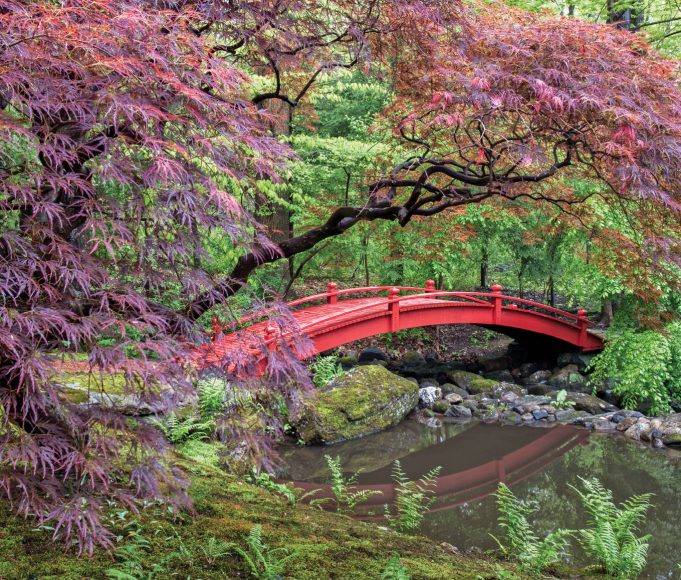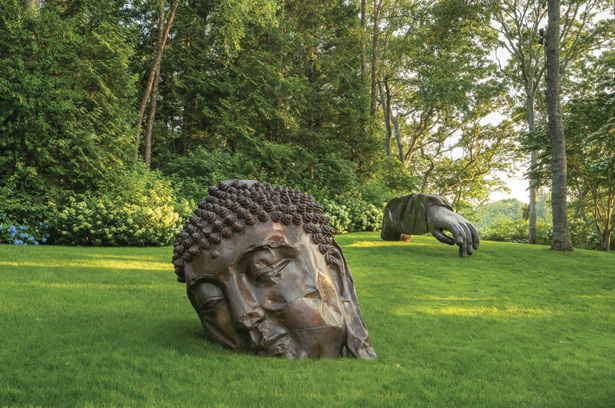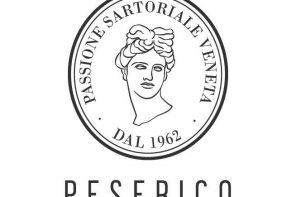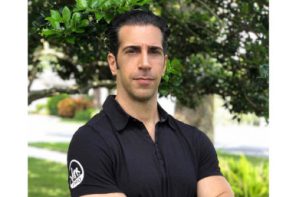It was the trees that drew them, says photographer Larry Lederman. In 1992, Lederman, then a practicing lawyer, and his wife, the interior designer Kitty Hawks, purchased four acres in Chappaqua that would become Hawks Nest in large part because of the mature trees that studded the landscape — maple, oak, tulip and pine.
“I bought a camera and started photographing the trees,” he recalls. “My wife said, ‘That’s not a tree.’” Clearly, he had much to learn.
And he did. He took a class in black-and-white photography but says, “That was really not for me. The trees are all in color.” On the advisory board of the New York Botanical Garden in the Bronx, Lederman began photographing the trees there, which range from lofty tulips to fanning fruit blossoms.
“No one was following trees at that time,” Lederman says. But he did and that led in 2012 to “Magnificent Trees of the New York Botanical Garden” and, in 2017, to “Rockefeller Family Gardens: An American Legacy.” (He was also the principal photographer of “Interior Landmarks: Treasures of New York,” the 125th anniversary edition of “The New York Botanical Garden” and “Frederic Church’s Olana on the Hudson,” about the Hudson River School painter and his Persian-style estate.)
Lederman’s latest — “Garden Portraits: Experiences of Natural Beauty” (The Monacelli Press, Oct. 13, $50, 223 pages) — is another splendid variation on his theme. With a text by Thomas Christopher and a foreword by Gregory Long, who served as president of the New York Botanical Garden for 25 years, Lederman offers lovers of landscape photography in-depth reflections on 16 public and private gardens, all but one of which — Long Island’s Glimcher Garden — are in Fairfield and Westchester counties.
The words “in-depth reflections” are chosen deliberately here. What strikes you from the moment you open the book — which begins with double-page spreads on Rock Cobble Farm in South Kent, Merrin Garden in Cortlandt Manor, Hawks Nest and Sleepy Cat Farm in Greenwich, all in different seasons — are the richly textured panoramas and reflective qualities Lederman achieves throughout. You feel as though you are walking over the leaf-strewn paths and stone footbridge of Hawks Nest in autumn amid bushes, shrubs and trees of varying heights in all their russet, gold and crimson glory.
Along the way, Lederman achieves the kind of sleight of hand that is the hallmark of any artist worthy of the name. What appears to be autumnal snow, glimpsed through a Japanese maple at The Beckoning Path in Armonk, are actually reflections of clouds on a lake. Later in the chapter on this garden — which was created by the late Ted Nierenberg, founder with wife Martha of Danks International Designs, the housewares company — a specimen maple seemingly suspended over the water evokes the lush mysteries of summer and the Far East. Meanwhile, in the chapter on Woodland Garden, native pink and white dogwoods watch over the Hudson Valley below and conjure all the fresh promise and yearning of spring.
How does Lederman attain his alchemy? It begins with a digital camera — a Nikon at first and now a Pentax 645Z — and always a tripod. “I shoot to achieve great depth of field, so I vary the time of exposure by keeping the aperture open. It allows in any light for good depth of field. It allows for complexity.”
Early on, he discovered that photographs made with his hand-held camera were often out of focus, because his hands were moving. Now he can blow up his photos to 60 by 90 inches and find exquisite detail.
Lederman also sets perimeters that he can then transcend in his art. For “Garden Portraits,” he chose gardens no more than an hour’s drive from his home and arrived early.
“I also tried to start in the winter when you can see the bones of a garden,” he says. Then he cycles through the seasons. Or many seasons: He photographed The Beckoning Path over three years — taking many images, as he always does, moving his tripod around, following the light.
You need a good pair of feet to be a photographer, Lederman adds, and to take your ego out of the equation. Perhaps that’s easier to do when photography begins as an avocation and you’ve already made a great success as something else. Specializing in mergers and acquisitions, Lederman rose to become chairman of global corporate practice for the firm of Milbank, Tweed, Hadley & McCloy LLP, now Milbank LLP, whose corporate headquarters are in Manhattan’s Hudson Yards. He still keeps his hand in the law, teaching mergers and acquisitions at New York Law School.
“If you’re very successful at something, people assume you’re not going to be as successful at something else.”
But with the intrepid spirit of the autodidact and a passion for nature, Lederman has disproved that assumption and is looking forward to his next variation on a theme — “Water in the Garden: A Photographic Essay.”
“If you’re excited, you start to see things in a new way.”
For more, visit larrylederman@smugmug.com.

